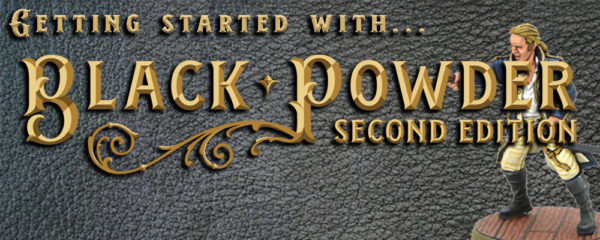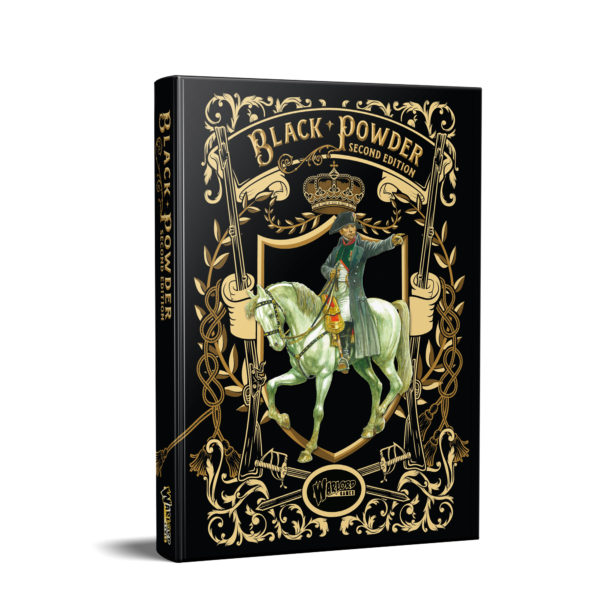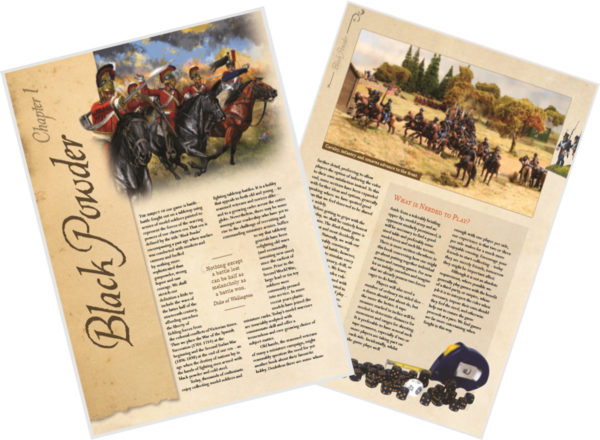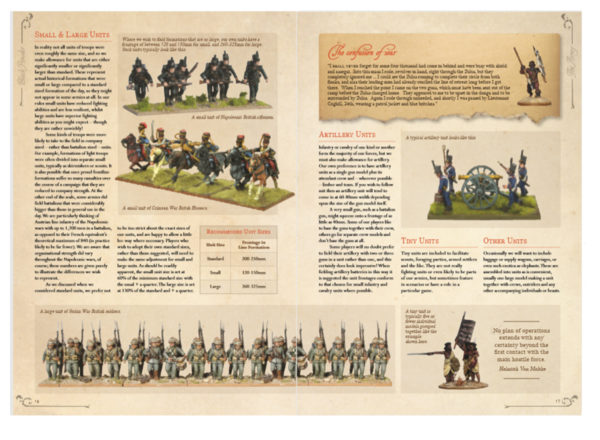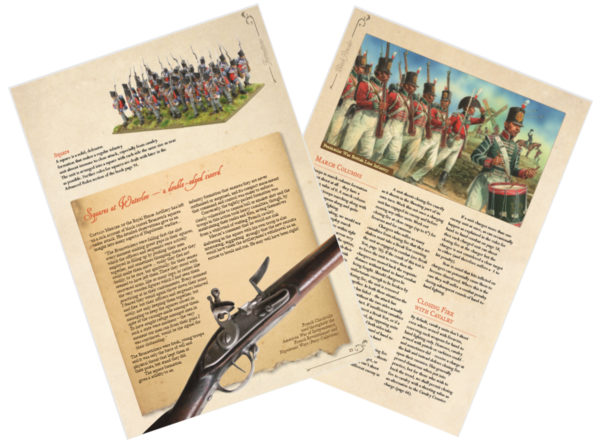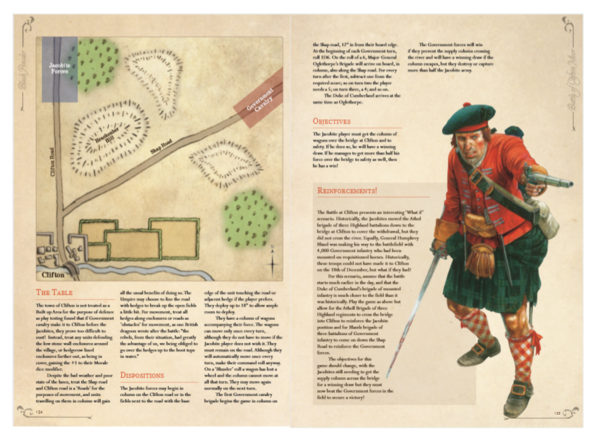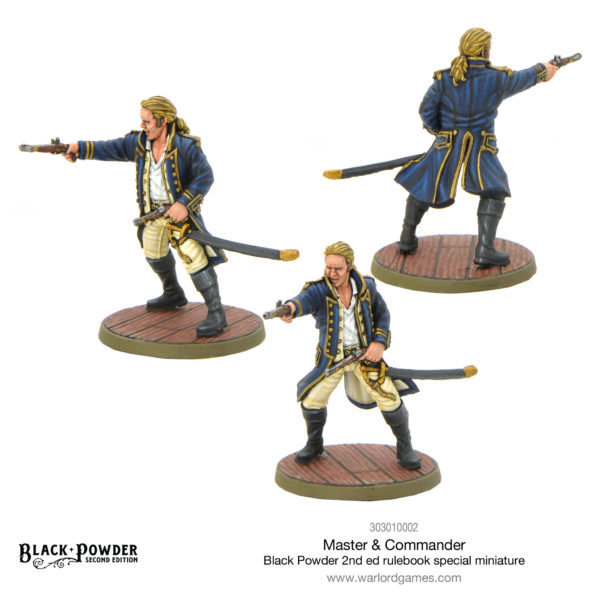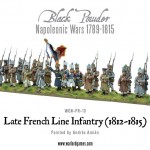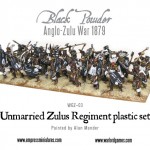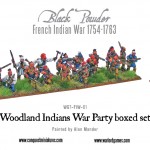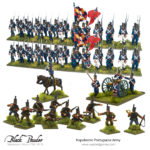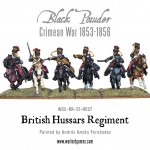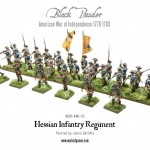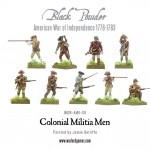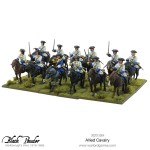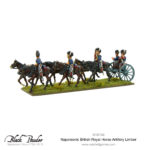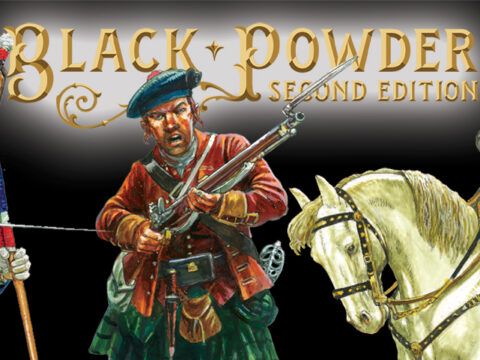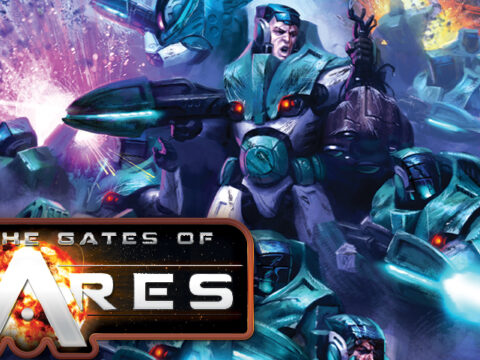With the launch of Black Powder 2 just around the corner, we’ve put together a quick guide to getting started with the new book, and what’s changed between the two editions.
After 8 years, our best-selling book has had a bit of an update to improve the experience for you, the players. As you’ll see further down, we’ve spent a lot of time in improving the look of the book, and updating the rules inside.
It’s still the same game you all know and love, but Rick’s made a few tweaks and improvements to the second edition that we’re sure you’ll all enjoy.
For those of you who are completely new to Black Powder, the game covers 200 years of military history, following the development of horse and musket tactics through the 18th and 19th centuries. Characterized by serried ranks of infantry supported by dashing cavalry and thundering cannons, the game encapsulates some of history’s most iconic battles including Clifton Moor and Waterloo, Antietam and Dead Man’s Creek.
Rest assured, we’re making sure that the new game is compatible with all existing supplements! These are a great resource if you’re looking to battle in a specific period of history.
The Book
This gorgeous hardback is available for pre-order today (available in stores from the 6th October 2018) and contains all the rules you need to get started with the game. It’s also packed full of gorgeous art and miniatures and is a fantastic collecting resource for anyone interested in the period.
The book covers 200 years of history, supported by a miniatures range covering the following periods:
- War of Spanish Succession (1701-1714)
- The Jacobite Rebellion (1745)
- French-Indian War (1754-1763)
- American War of Independence (1776-1783)
- Napoleonic Wars (1789-1815)
- Napoleon in Egypt
- Napoleon in Russia
- Peninsula Campaign
- The Hundred Days
- Seminole Wars (1814-1858)
- Plains Wars (1850’s-1890’s)
- Crimean War (1853-1856)
- American Civil War (1861-1865)
- Anglo-Zulu War (1879)
- Mahdist Revolt (1884)
Lucky Jack
As with all our books, Black Powder 2 comes with a free miniature. This time, we’ve taken a decidedly nautical turn and created a dashing ship’s captain, dramatically brandishing a pistol. This beautiful miniature would be the perfect way to differentiate a British force by styling him as the commander of a unit of red-coated marines.
The Changes
We spoke with game designer Rick Priestley about the 10 biggest changes that have been made in Black Powder 2. Take it away, Rick!
- The role of Generals has been redefined as there was a view that Generals were either never used, or the rules for using them were easily forgotten or misremembered. So, I’ve changed the rule to make Generals more integral to play – allowing them to interact with their commanders bestowing a re-roll. I’ve also provided some variant General rules in the Advanced rules section, including the original version.
- The rules for skirmishers and evading units have been given a make-over as this was one aspect of the game that some players found frustrating – namely that skirmishes were too effective and could escape from closing enemy too easily. I’ve basically imported the evade rule from Hail Caesar. Evading units now make a dice test and move away from their enemy one, two or three moves, after which the chargers move. Evaders may or may not be caught depending on the result. I’ve also allowed cannons to shoot through lines of skirmishers at longer ranges, as there was opinion to the effect that such formations presented no obstacle to sight or cannon balls.
- Disordered units within 12” of the enemy are now allowed to make a ‘disorderly retreat’ as an initiative move but retain their disorder at the end of the turn if they do so. This addresses the concern that disordered units stuck in front of enemy fire were unable to move, especially cavalry where some sort of disorderly retreat might seem a more likely outcome.
- The rules for enfilades have been changed from conferring double hits to re-rolls, making them more predictable but less devastating and removing an element of ‘gamesmanship’ from play (perish the thought).
- One of the biggest changes reflects the way many already play – representing hand-to-handing fighting unit on unit rather than allowing multiple units on one side. There are still some exceptions – such as when artillery is engaged and when units of disproportionate sizes are engaged – but broadly speaking I’ve rewritten the engagement rules to facilitate one-on-one combats. This involved unpicking and re-stitching all the rules for moving into contact, but the result is a bit breezier and more straight-forward.
- The rules for Victory and Defeat have been tidied up and are now part of the main game rather than presented as advanced or optional rules. There were two concerns to address here. One was that the rules governing the behaviour of broken brigades caused endless confusion and were inevitably played differently by different players. I’ve sorted that by having such units retreat automatically rather than obliging them to do so only when the enemy was close by. The second was that brigades were too fragile at certain sizes – especially brigades of two or three units. I’ve addressed that by making an exception for such formations and listing specific exemptions where units ‘don’t count’ towards the brigade’s total. I’ve also allowed players to set break limits and exceptions for themselves should they wish – for example, if you want to allow breaks at ‘more than half units gone’ rather than ‘half unit’s gone’. Personally, I reckon ‘more than half units gone’ slows the game down too much and I like to be in bed by midnight. Allowances must be made for old age.
- The rules for rockets have been changed to make them less accurate and generally less effective if more entertaining – with commonly misdirected shots and damage upon the rocket battery itself. This was in response to the view that rockets were too effective compared to historically and also too predictable. In reality, they often ended up all over the battlefield.
- New Useful rules have been added for mounted infantry – these were previously covered in the scenarios and the rules tended to vary between forces. Rules for poor shooters have been added, simply a -1 to hit that was felt to better reflect some native and badly armed troops compared to (or in addition to) a reduction in shooting stats. Other than that I have not attempted to compile the very many and often extremely long and detailed rules from the various supplements, which I feel should stay where they belong.
- The rules for Commanders’ special abilities has been changed for a new section of optional useful rules for commanders and generals. I found that players rarely used the original variants and generally avoided randomly rolling them, so I just changed the system to something more like that for the useful rules we apply to troops. I also used this section to give the previous rule for Generals as a variant – should players otherwise wish to continue using it. It does work well for certain type of conflict, notably asymmetric colonial actions where a certain amount of heroic dashing to and fro might be expected.
- Otherwise, I’ve reordered much of the text to make the game clearer and in places, I’ve described things anew to the same end. For example, I’ve presented the standard size of a unit by giving a recommended range of frontages to start with and then explaining that players can vary this if they want – rather than approaching unit sizes as completely up to the players from the start. But none of these things are changes in terms of the rules themselves.
Getting Started with Black Powder 2
We know that it can be daunting to get into a new game, so we’ve given you a few simple steps for getting started with Black Powder 2.
- Pick a period: This step is entirely down to you – what attracts you to the game? Do you want to watch a thin red line of Highlanders face down the Russian cavalry at Balaclava, or capture an eagle at Talavera? Perhaps you want to fight for American independence or march on Moscow with Napoleon. If you’re looking for inspiration, have a browse through the webstore or the article hub and see if anything catches your eye.
- Buy some models: Once you’ve picked a period, you’ll need some models to represent your armies on the battlefield. We’ve got a range of fantastic starter sets that give you everything you need to get an army of the ground. Grab one of these and some paint and you’re good to go! Alternatively, if you’re Napoleonically-inclined, split the fantastic Waterloo starter set with a friend.
- Play an introductory game: Now you’ve got some miniatures ready for the tabletop, find a friend and play a game or two. We’ll have some guidelines for playing smaller games in a future article, so you can get used to the game before taking on the chaos of Rorke’s Drift or Austerlitz.
Our Collection
Here are some of the amazing miniatures you can collect for your games of Black Powder 2:

